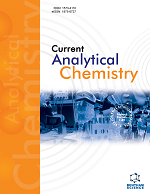
Full text loading...

Medicinal plants have long served as a foundation for therapeutic development, offering a vast repository of bioactive compounds. This study examines the phytochemical composition and potential pharmacological properties of Strychnos chromatoxylon L. leaves, aiming to identify natural compounds that may contribute to sustainable and effective healthcare solutions.
Methanolic extraction was performed using maceration followed by evaporation to optimize the yield of phytochemicals. The extract was then subjected to qualitative phytochemical screening, Thin-Layer Chromatography (TLC), Gas Chromatography-Mass Spectrometry (GC-MS) analysis, and in vitro assays, including the MTT assay, to evaluate its antioxidant, antimicrobial, and anticancer activities.
The methanolic extract of Strychnos chromatoxylon revealed a diverse array of phytochemicals, including alkaloids, carbohydrates, glycosides, phenolics, flavonoids, and phytosterols. GC-MS profiling identified several bioactive compounds. The extract exhibited promising antimicrobial activity and demonstrated cytotoxic effects in MTT assays, indicating its potential anticancer properties.
The presence of a broad spectrum of phytochemicals supports the traditional use of Strychnos chromatoxylon in herbal medicine. The observed bioactivities, particularly antimicrobial and anticancer effects, are likely attributed to the synergistic actions of its constituents. While the findings are promising, further investigation, including in vivo studies and compound isolation, is needed to validate therapeutic potential and ensure safety.
This study highlights Strychnos chromatoxylon as a promising source of natural bioactive agents with antimicrobial and anticancer potential. By integrating traditional medicinal knowledge with contemporary scientific approaches, we can advance the search for novel and sustainable therapeutic agents.

Article metrics loading...

Full text loading...
References


Data & Media loading...